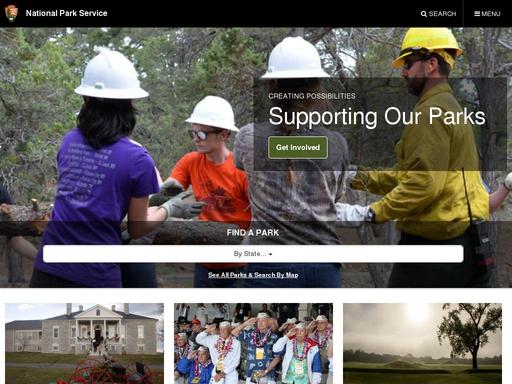Rate Fort Smith National Historic Site
Learn and Explore
Since 1916, the National Park Service has been entrusted with the care of our national parks. With the help of volunteers and partners, we safeguard these special places and share their stories with more than 275 million visitors every year. But our work doesn’t stop there.
We are proud that tribes, local governments, nonprofit organizations, businesses, and individual citizens ask for our help in revitalizing their communities, preserving local history, celebrating local heritage, and creating close to home opportunities for kids and families to get outside, be active, and have fun.
Taking care of the national parks and helping Americans take care of their communities is a job we love, and we need—and welcome—your help and support.
Our Mission
The National Park Service preserves unimpaired the natural and cultural resources and values of the National Park System for the enjoyment, education, and inspiration of this and future generations. The Park Service cooperates with partners to extend the benefits of natural and cultural resource conservation and outdoor recreation throughout this country and the world.
Frequently Asked Questions
How do I obtain a park entrance pass?
Only 118 of your 417 park sites charge entrance fees. You can obtain park entrance passes by visiting a park site that charges an entrance fee. Entrance fee sites have passes available; we recommend calling a park prior to your visit. (See the park search to locate a specific park.) There are a number of entrance passes available, including park-specific passes as well as passes that offer entrance to more than 2,000 federal recreation sites in addition to the national parks (Annual, Military, Senior, 4th Grade, Access, and Volunteer passes). Learn more about the America the Beautiful – The National Parks and Federal Recreational Lands Pass.
About this location:
National Historic Site
Operating Hours & Seasons
Fees & Passes
Entrance Fees:
- $7.00 – Entrance walk in – per person
Entrance fee is good for individual entrance into the exhibits inside the visitor center building. There is no fee for viewing the grounds.
Entrance Passes:
- $30.00 – Fort Smith National Historic Site Annual Pass
The annual pass allow the pass holder and 3 adults (16 and older) free entrance to all the exhibits in the visitor center. The pass is valid for 12 months from the month of purchase, expiring the last day of that month.
About
Discover the Past
From the establishment of the first Fort Smith on December 25, 1817, to the final days of Judge Isaac C. Parker’s jurisdiction over Indian Territory in 1896, Fort Smith National Historic Site preserves almost 80 years of history.
Explore life on the edge of Indian Territory through the stories of soldiers, the Trail of Tears, dangerous outlaws, and the brave lawmen who pursued them.
Directions
From Interstate 40 Eastbound: Exit at Roland, and drive six miles on highway 64 to downtown Fort Smith. From Interstate 40 Westbound & from North I 540 & Fayetteville, take Interstate 40 westbound to I 540 south. Exit west on Rogers Ave. and continue to downtown. In the downtown area: On Rogers or Garrison Ave turn south at 4th St. Turn right onto Garland Ave. At the end of the next block is the entrance to the main parking lot. Parking is also available on Third Street.
Visitor Center, Commissary, and Gallows
The visitor center, commissary, and gallows are closed on New Year’s Day, Thanksgiving, and Christmas. The park grounds are open.
Weather
Fort Smith weather usually is mild no matter the season. With four distinct, yet temperate seasons. Spring and fall are particularly mild with hot and humid days in late summer and during winter months when temperatures occasionally dip into the teens or below. Forecast often changes dramatically due to surrounding weather influences. Arkansas’s central location allows weather systems from all directions to influence its climate.







